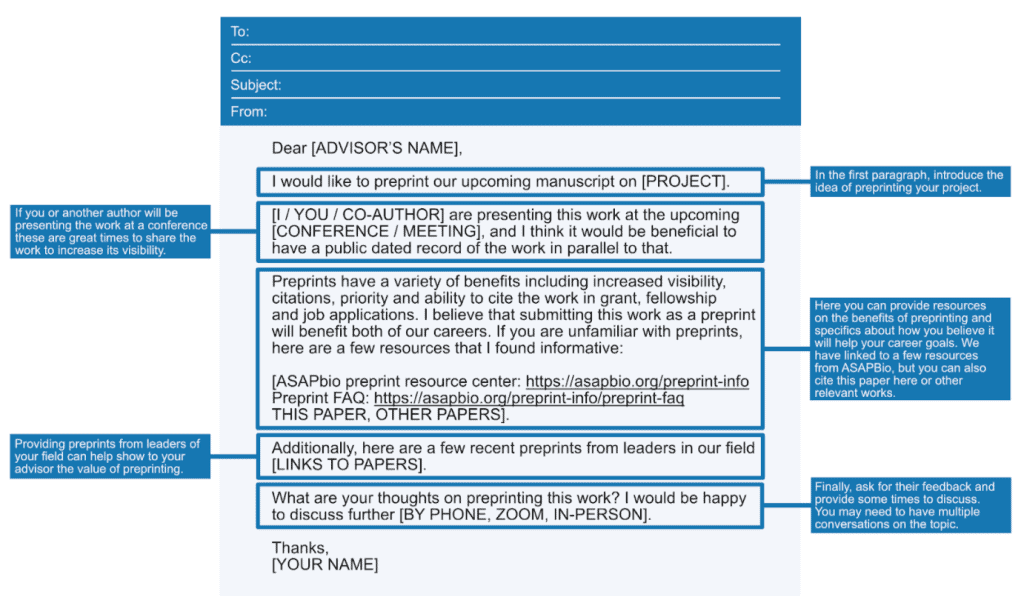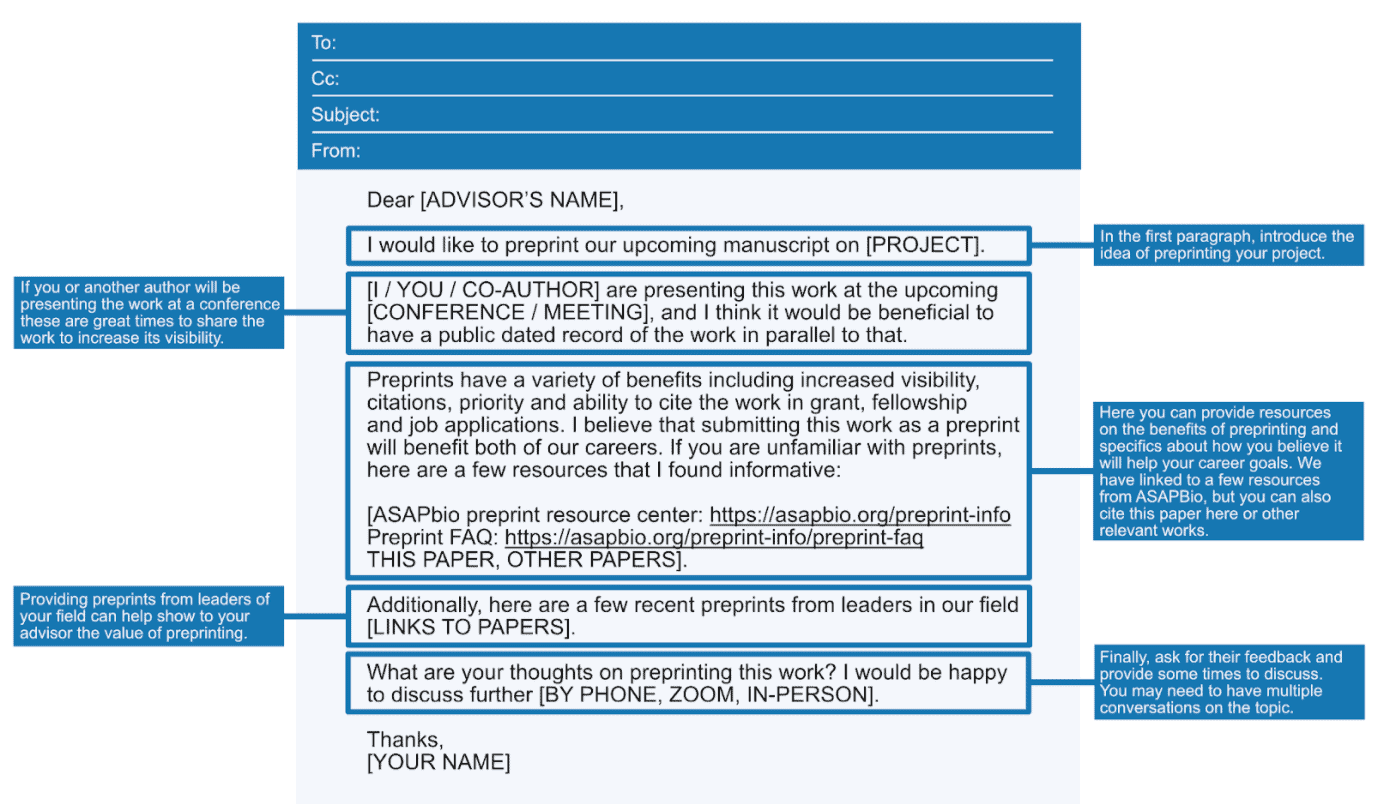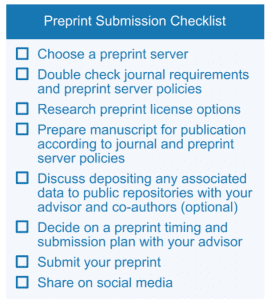Post by Cassandra Ettinger and Madhumala Sadanandappa
The ASAPbio Fellows program offered by ASAPbio is an excellent opportunity for graduate students, postdocs, and information professionals to learn and become engaged with preprints. Through the 2021 Fellows program, we interacted with researchers across different career stages from various countries and learned about their experience and familiarity (or lack thereof) with preprinting. During these discussions, we noticed that though many early career researchers (ECRs) – graduate students, postdocs, research associates, research assistants, etc. – actively engaged with preprints on various platforms, many were unclear about the process of preprinting a manuscript. In addition, given ECRs are often not the final decision-makers for the manuscripts they co-author, several find it challenging to discuss the option of preprinting with their advisors or co-authors. We decided to tackle this issue by creating a guide that helps and empowers ECRs regarding preprinting.
Our preprint, “A Guide to Preprinting for Early Career Researchers,” is available on OSF Preprints. Briefly in our preprint, we focus on the following topics:
(1) What are preprints?
We provide the historical perspective of preprints and discuss different preprint server options for life science researchers.
(2) How are different disciplines in the life sciences engaging with preprints?
The preprint server’s discipline, scope, policies, and readership are relevant to determine where to deposit a preprint for maximum visibility for the work and to obtain feedback from researchers in the field. Therefore, based on the data retrieved from the bioRxiv and medRxiv servers, we describe the current preprinting landscape to help ECRs understand where their preprint might fit.
(3) How to approach conversations about preprints with co-authors?
We provide tips for engaging in conversations and email templates to help ECRs initiate conversations about preprinting with advisors and co-authors.

(4) What concerns may come up in conversations about preprints?
While having conversations about preprinting, worries and questions are expected. We discussed two significant concerns in detail – getting scooped and sharing work prior to peer review. In addition, we tabulated other concerns and included things to consider and the benefits of preprinting.
(5) What are practical steps for depositing a preprint?
We provide a list of actionable steps towards preprinting a manuscript to elucidate the process and discuss what to do if your co-authors do not want to proceed with preprinting.
(6) What are other ways to get involved with preprints?
Finally, we encourage ECRs to engage with preprints by detailing other ways to get involved in preprinting, including ASAPbio’s Fellows program, eLife’s Ambassadors program, posting a preLight, or joining/starting a PREreview journal club.
We hope that the guide will be a useful resource for ECRs considering a preprint for their next paper. Are there additional approaches you have used in your conversations about preprints with your advisors? Share any other tips or suggestions by posting on this blog post or the preprint.
We would like to thank ASAPbio for offering the Fellows program and 2021 program participants for valuable discussions. Special thanks to Iratxe Puebla and Jessica Polka for support and assistance throughout the program.
Link to the preprint: Ettinger, Cassandra L., Madhumala K. Sadanandappa, Kivanc Görgülü, Karen Coghlan, Kenneth K. Hallenbeck, and Iratxe Puebla. 2022. “A Guide to Preprinting for Early Career Researchers.” OSF Preprints. January 4. doi:10.31219/osf.io/e59tk








